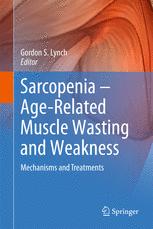

Most ebook files are in PDF format, so you can easily read them using various software such as Foxit Reader or directly on the Google Chrome browser.
Some ebook files are released by publishers in other formats such as .awz, .mobi, .epub, .fb2, etc. You may need to install specific software to read these formats on mobile/PC, such as Calibre.
Please read the tutorial at this link: https://ebookbell.com/faq
We offer FREE conversion to the popular formats you request; however, this may take some time. Therefore, right after payment, please email us, and we will try to provide the service as quickly as possible.
For some exceptional file formats or broken links (if any), please refrain from opening any disputes. Instead, email us first, and we will try to assist within a maximum of 6 hours.
EbookBell Team

5.0
28 reviewsSome of the most serious consequences of aging are its effects on skeletal muscle. ‘Sarcopenia’, the progressive age-related loss of muscle mass and associated muscle weakness, renders frail elders susceptible to serious injury from sudden falls and fractures and at risk for losing their functional independence. Not surprisingly, sarcopenia is a significant public health problem throughout the developed world. There is an urgent need to better understand the neuromuscular mechanisms underlying age-related muscle wasting and to develop therapeutic strategies that can attenuate, prevent, or ultimately reverse sarcopenia. Significant research and development in academic and research institutions and in pharmaceutical companies is being directed to sarcopenia and to related health issues in order to develop and evaluate novel therapeutics. This book provides the latest information on sarcopenia from leading international researchers studying the cellular and molecular mechanisms underlying age-related changes in skeletal muscle and identifies strategies to combat sarcopenia and related muscle wasting conditions and neuromuscular disorders. The book provides a vital resource for researchers and practitioners alike, with information relevant to gerontologists, geriatricians, sports medicine physicians, physiologists, neuroscientists, cell biologists, endocrinologists, physical therapists, allied health and musculoskeletal practitioners, strength and conditioning specialists, athletic trainers, and students of the medical and biomedical sciences.